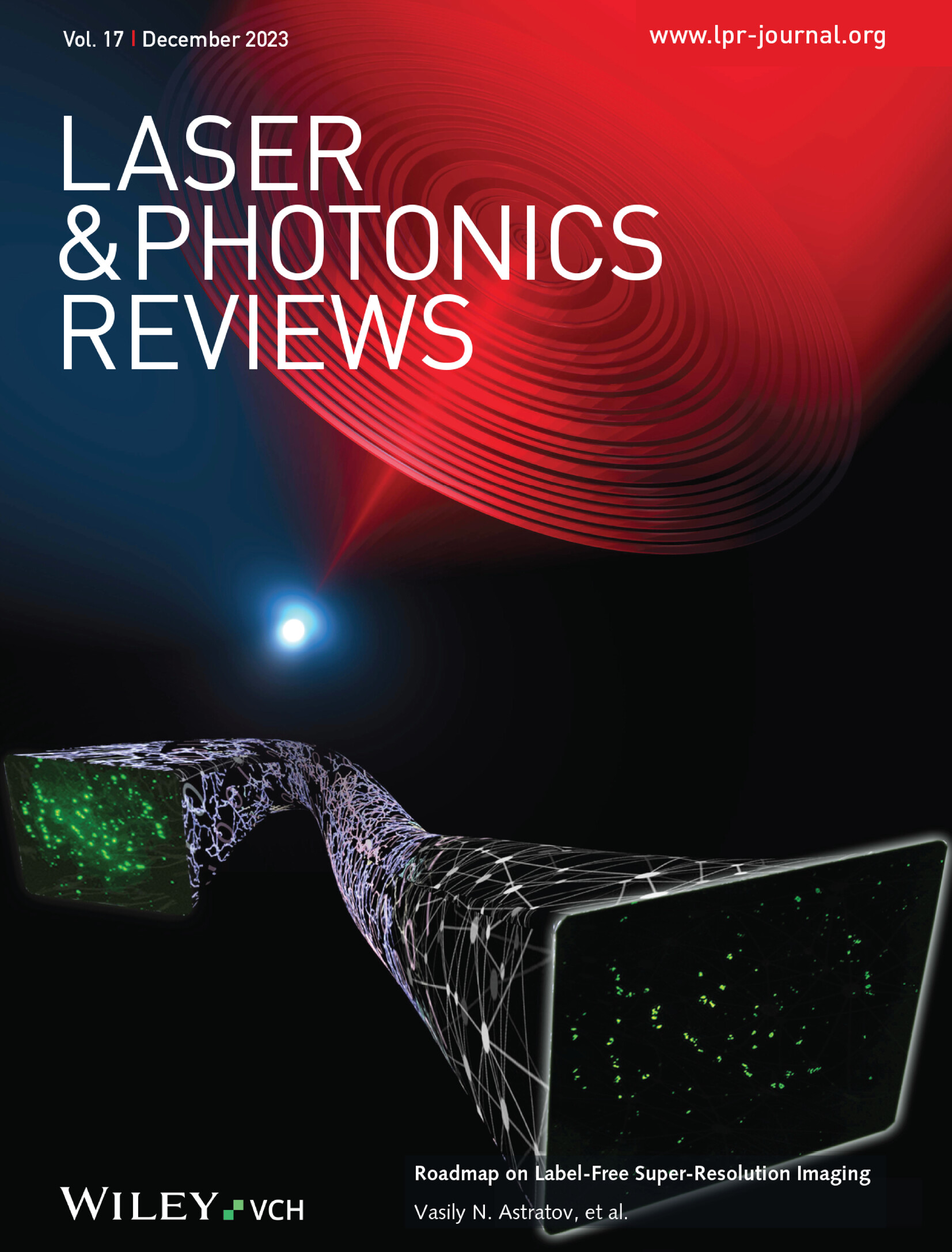利用超表面-吸收器-集成声子晶体振荡器进行室温中红外探测
IF 10
1区 物理与天体物理
Q1 OPTICS
引用次数: 0
摘要
中红外(MIR)探测器在化学传感、光谱学、通信、生物医学诊断和空间探索等领域有着广泛的应用。作为半导体MIR光电二极管和辐射热计的替代品,基于机械谐振器的MIR探测器在室温下具有更高的灵敏度和更低的噪声,特别是对波长更长的红外线。本文展示了基于铌酸锂表面声波声子晶体(PnC)谐振器的非冷却室温MIR探测器,该谐振器集成了波长和偏振选择性超表面吸收器阵列。探测是基于局部温度变化引起的共振频移,这是由于MIR吸收引起的。PnC谐振器配置为振荡模式,使有源读出和低频噪声成为可能。基于1 GHz振荡器的MIR探测器在50µs的积分时间内的相对频率偏差为5.24 × 10−10 Hz−1/2,当输入6µm MIR光以1.8 kHz调制时,入射噪声等效功率为197 pW Hz−1/2,入射MIR功率的动态范围为107。该器件架构与可扩展的制造工艺兼容,并且可以通过剪裁超表面吸收器的吸收波长轻松扩展到更宽的光谱范围。本文章由计算机程序翻译,如有差异,请以英文原文为准。
Room‐Temperature Mid‐Infrared Detection Using Metasurface‐Absorber‐Integrated Phononic Crystal Oscillator
Mid‐infrared (MIR) detectors find extensive applications in chemical sensing, spectroscopy, communications, biomedical diagnosis, and space exploration. Alternative to semiconductor MIR photodiodes and bolometers, mechanical‐resonator‐based MIR detectors show advantages in higher sensitivity and lower noise at room temperature, especially toward longer wavelength infrared. Here, uncooled room‐temperature MIR detectors based on lithium niobate surface acoustic wave phononic crystal (PnC) resonators integrated with wavelength‐and‐polarization‐selective metasurface absorber arrays are demonstrated. The detection is based on the resonant frequency shift induced by the local temperature change due to MIR absorptions. The PnC resonator is configured in an oscillating mode, enabling active readout and low‐frequency noise. The 1‐GHz oscillator‐based MIR detector shows a relative frequency deviation of 5.24 × 10−10 Hz−1/2 at an integration time of 50 µs, leading to an incident noise equivalent power of 197 pW Hz−1/2 when input 6‐µm MIR light is modulated at 1.8 kHz, and a large dynamic range of 107 in incident MIR power. The device architecture is compatible with the scalable manufacturing process and can be readily extended to a broader spectral range by tailoring the absorbing wavelengths of metasurface absorbers.
求助全文
通过发布文献求助,成功后即可免费获取论文全文。
去求助
来源期刊
CiteScore
14.20
自引率
5.50%
发文量
314
审稿时长
2 months
期刊介绍:
Laser & Photonics Reviews is a reputable journal that publishes high-quality Reviews, original Research Articles, and Perspectives in the field of photonics and optics. It covers both theoretical and experimental aspects, including recent groundbreaking research, specific advancements, and innovative applications.
As evidence of its impact and recognition, Laser & Photonics Reviews boasts a remarkable 2022 Impact Factor of 11.0, according to the Journal Citation Reports from Clarivate Analytics (2023). Moreover, it holds impressive rankings in the InCites Journal Citation Reports: in 2021, it was ranked 6th out of 101 in the field of Optics, 15th out of 161 in Applied Physics, and 12th out of 69 in Condensed Matter Physics.
The journal uses the ISSN numbers 1863-8880 for print and 1863-8899 for online publications.

 求助内容:
求助内容: 应助结果提醒方式:
应助结果提醒方式:


